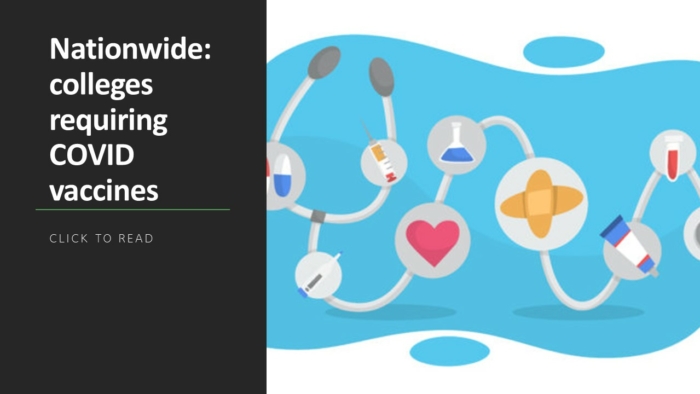
There was a period of time this spring where it seemed like we might have the COVID-19 virus beat. Vaccines were widely available, the federal government actually seemed to have a plan in place, and people were excited to “get back to normal.” Then vaccine rates started to slow, the delta variant happened, and suddenly it seemed like we may never be free of the SARS-CoV-2 virus.
For universities searching for ways to keep staff and students safe this fall, the predicament is grim. Are we at the end of the pandemic, or are we headed back to a world where masks, social distancing, and all the other precautions are the new normal? Unfortunately, it looks to be the latter. While we had a chance to achieve herd immunity and knock COVID-19 out of circulation, that window appears to be closed. And it’s likely to stay that way as long as politicized misinformation continues to suppress vaccination rates.
That means colleges and universities must enact precautions to protect their students, faculty, and other staff members. While some schools may be able to require proof of vaccination for anyone on campus, the vast majority will have to resort to the same tactics they have been using over the past 18 months. That includes remote teaching, reduced class sizes, and finding ways to reduce in-person lines and crowds to promote safe social distancing.
When it comes to that last piece, scheduling software is one of the most effective tools in any organization’s precautionary toolkit. Scheduling software allows you to replace in-person lines — like the ones at your bookstore, your registrar’s office, and in all sorts of other places on your campus — with virtual lines that use mobile devices to keep people up to date on their wait. Just think of how different (and socially distant) things will look around your school when those physical queues are gone, and people are able to wait their turn in line without physically gathering in one place.
Better yet, it’s one of the easiest solutions you can implement, and it’s something that has been shown to improve user experience even when you remove the potential life-saving implications caused by the ongoing airborne pandemic. Nobody actually enjoys standing in line, so why not make sure that nobody on your campus actually has to stand in line? All it takes is the right software and you’re up and running. Now that’s a whole lot easier than putting up those plexiglass dividers or painting lines on the floors to keep people safely spread apart.
However, that’s not to say that scheduling software should act as a replacement for dividers and social distancing markers. The more precautions you take, the better. The CDC recommends a “layered approach” combining contact tracing, distancing, and other precautionary measures.
The idea is that there is no single “magic bullet” solution to protecting against the pandemic — other than widespread vaccination — the best way to keep people safe is to implement as many other precautions as possible. Each layer helps keep COVID off your campus, or helps keep it contained should it get past your defenses. Think of it like the safety measures in a car — the brakes are there to stop you from crashing, but the seatbelt, airbags, crumple zones, and other safety measures are there “just in case.”
It’s unfortunate that we’re still talking about COVID-19 precautions at all, but the good news is that there were plenty of solutions found over the year and a half we’ve had to deal with the pandemic. Not to be the bearer of bad news, but it’s time to consider our battle as “ongoing” rather than “over” and to continue with the precautions that have helped mitigate the disease so far. While that means the light at the end of the tunnel may be receding rather than growing, it also means that your students, faculty, and staff can return to campus this fall and know that their safety is being taken seriously.
Charlie Meyer is the Senior VP of Sales and leads the North American sales team at Qless. With more than 20 years of sales leadership experience in enterprise and SaaS software, Charlie brings a wealth of sales and leadership guidance to the growing company and market.
More from UB



